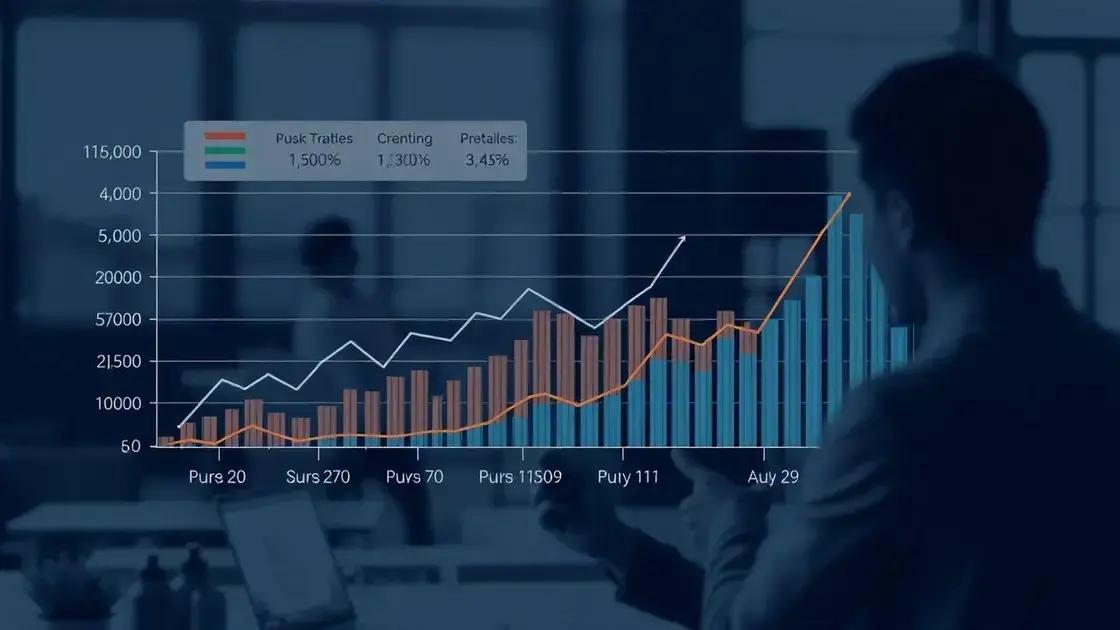Capital structure optimization techniques for business growth

Capital structure optimization techniques involve managing the mix of debt and equity to improve financial performance, reduce risks, and enable sustainable growth for businesses.
Capital structure optimization techniques are vital for businesses aiming to enhance their financial performance. Have you ever wondered how adjusting your financing can lead to significant growth? This article delves into essential strategies that can transform your organization’s financial stability.
Understanding capital structure
Understanding capital structure is crucial for every business looking to optimize its financial performance. It refers to the way a company finances its overall operations and growth through various sources of funds. This includes a mix of debt, equity, and other financial instruments. By grasping the fundamentals, businesses can make informed decisions that have significant long-term impacts.
The components of capital structure play a vital role in determining a company’s risk and return profile. Each choice between debt and equity affects the overall financial stability of the business. For instance, relying heavily on debt may increase risk during downturns, while too much equity can dilute ownership and limit potential returns.
Key components of capital structure
To better understand the capital structure, let’s break down its main components:
- Debt financing: Borrowing funds that must be repaid over time, often with interest.
- Equity financing: Raising capital by selling shares to investors, providing ownership in the company.
- Retained earnings: Profits that are reinvested in the business instead of distributed as dividends to shareholders.
- Hybrid instruments: Financial tools that combine aspects of both debt and equity, such as convertible bonds.
Companies often assess their capital structure to maintain an optimal balance. This balancing act helps mitigate risks while maximizing growth potential. As businesses evolve, their financing needs change, making it essential to periodically review and adjust the capital structure. Effective management of this structure can lead to an improved credit rating, reduced costs of capital, and increased shareholder value.
Why capital structure matters
The capital structure significantly influences a company’s financial health and operational capacity. When a business understands its capital options, it can strategically navigate market conditions. Linking financing decisions to corporate strategy ensures that the company not only survives but thrives. Strong capital structure management allows for better risk management and increased profitability.
For example, during economic downturns, having a favorable mix of debt and equity can make all the difference. It helps absorb shocks while allowing for continued investment in key areas. By optimizing these financial strategies, firms can position themselves for sustained success and growth.
Key techniques for optimization

Many companies strive for effective capital structure optimization as a way to enhance their financial performance. Key techniques can significantly impact how well a business allocates its resources. By implementing these strategies, firms can create a balanced approach to finance, balancing risk and opportunity.
One powerful technique involves analyzing the current mix of debt and equity. Understanding how these elements interact can help identify inefficiencies. A proper evaluation allows companies to adjust their financing strategies as needed. This way, they increase the potential for higher returns.
Techniques for capital structure optimization
Here are some techniques businesses can use to optimize their capital structure:
- Debt refinancing: Taking advantage of lower interest rates by refinancing existing debt can reduce financial costs.
- Equity buybacks: Repurchasing shares can improve earnings per share and boost stock prices.
- Maintaining liquidity: Ensuring enough cash reserves enables a company to meet short-term obligations while pursuing growth opportunities.
- Diversifying funding sources: Utilizing a mix of financing options, such as loans, bonds, and equity, can spread risk.
Another vital technique is focused on maintaining an optimal level of leverage. Companies should carefully assess how much debt they can manage without increasing risk excessively. Too much leverage can lead to financial distress, especially in downturns. Investors often look for signs of adequate leverage to ensure that a company can meet its obligations while pursuing growth.
Utilizing scenario analysis can also enhance *optimization efforts*. By examining various financial scenarios, firms can prepare better for market fluctuations. This predictive approach offers insights that aid strategic decision-making.
Impact on financial health
The impact on financial health is one of the most critical aspects of optimizing a company’s capital structure. When a business effectively manages its financing, it can improve profitability and reduce risks. Each component of the capital structure affects how a company operates and influences key financial metrics.
For instance, having the right mix of debt and equity can enhance a firm’s financial ratios. A balanced capital structure helps maintain a strong credit rating, which in turn lowers borrowing costs. This means the firm can invest more in growth opportunities and innovations.
How capital structure influences key financial metrics
Different aspects of financial health are influenced by the company’s capital structure:
- Profitability: A well-optimized structure can boost net income and overall returns for shareholders.
- Liquidity: Maintaining a healthy level of liquid assets helps a company meet short-term obligations and stay agile.
- Risk exposure: A high level of debt can increase financial risk, especially during economic downturns.
- Cost of capital: Refinancing debt at lower rates decreases the overall cost of capital, making it cheaper for companies to fund operations.
The right capital structure can lead to better cash flow management. Timely payments and reduced liabilities enhance a company’s reputation with creditors and investors alike. This fosters an environment of trust, which can translate into better financing terms and opportunities.
Additionally, the capital structure dynamically adjusts according to market conditions. Firms should be prepared to shift their financing approach based on interest rates, economic cycles, and competitive landscapes. Staying adaptable ensures long-term financial stability.
Real-world examples of successful optimization

Real-world examples of successful capital structure optimization demonstrate how businesses can thrive by making informed financial decisions. These cases highlight strategies that various companies have implemented to achieve balance between debt and equity.
One notable example is that of Company A, which faced high interest rates on existing debt. They undertook a refinancing strategy that lowered their interest payments significantly. This move not only reduced their financial burden but also improved their cash flow, allowing them to invest more in growth opportunities.
Case studies of effective optimization
Here are some key cases that illustrate successful optimization:
- Company B: This firm strategically issued new equity to pay down high-cost debt, thereby decreasing its overall cost of capital and enhancing financial health.
- Company C: By diversifying funding sources, this organization reduced risk and improved its overall capital structure. They utilized loans, bonds, and equity, minimizing dependency on any single funding type.
- Company D: Implemented a share repurchase program to return value to shareholders. This action not only boosted the earnings per share but also made their capital structure more efficient.
- Company E: Focused on improving liquidity by increasing cash reserves. This precaution allowed the firm to navigate uncertain economic conditions without sacrificing growth initiatives.
Additionally, these success stories emphasize the importance of ongoing assessment in capital structure management. Regularly monitoring financial performance helps companies adapt to changes in the market environment.
Investors and stakeholders often analyze these examples to gauge the effectiveness of optimization strategies. Learning from these real-world scenarios enables other businesses to replicate similar successes in their financial practices.
FAQ – Frequently Asked Questions about Capital Structure Optimization
What is capital structure optimization?
Capital structure optimization is the process of adjusting a company’s mix of debt and equity to maximize efficiency and minimize financial risk.
How does capital structure affect a company’s risk?
A balanced capital structure can reduce a company’s overall risk by ensuring that it is not overly reliant on debt, which can lead to financial distress.
What techniques can be used for capital structure optimization?
Key techniques include refinancing debt, diversifying funding sources, and maintaining liquidity to improve overall financial health.
Why is it important to regularly review capital structure?
Regular reviews help businesses adapt their financing strategies to changing market conditions, ensuring sustained growth and financial stability.





